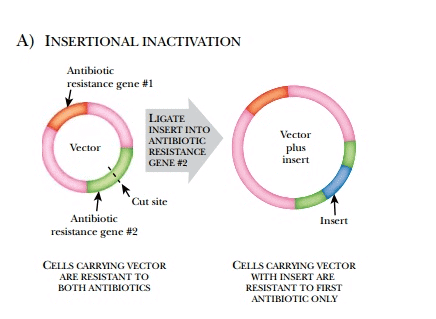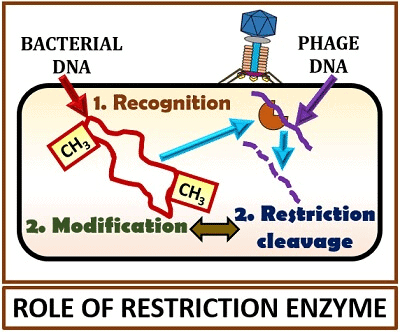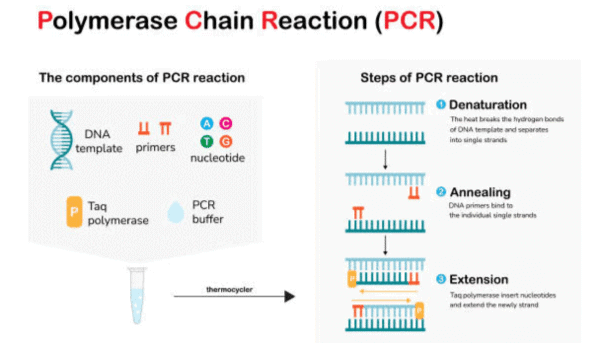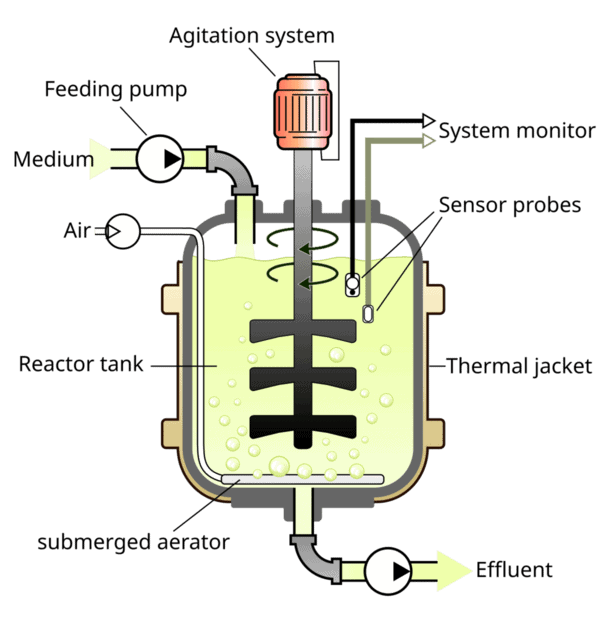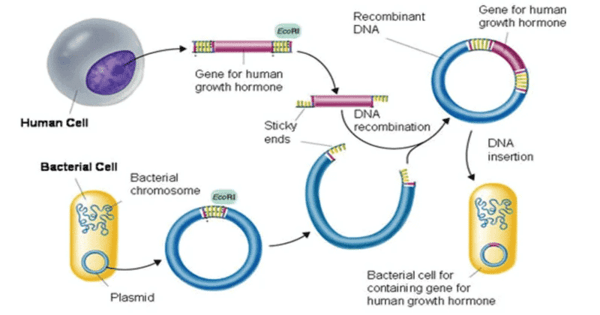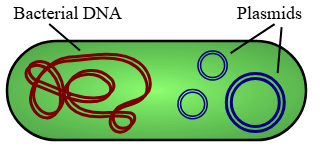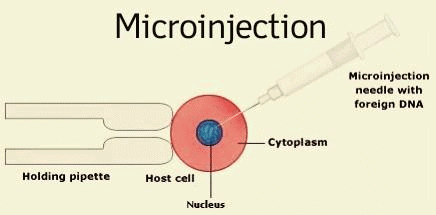|
False. Restriction enzymes cut DNA at specific palindromic recognition sequences. |
Card: 6 / 30 |
|
Insertion of foreign DNA inactivates a gene, allowing recombinant colonies to be identified by lack of color.
|
Card: 8 / 30 |
|
An enzyme that cuts DNA at specific palindromic recognition sequences, producing sticky ends.
|
Card: 10 / 30 |
|
Riddle: I am a process that amplifies DNA billion-fold, using cycles of heating and cooling. What am I? |
Card: 11 / 30 |
|
Fill in the blank: The first recombinant DNA was created in ___ by linking an antibiotic resistance gene to a plasmid. |
Card: 13 / 30 |
 Unlock all Flashcards with EduRev Infinity Plan Starting from @ ₹99 only
|
|
They are vessels for large-scale culture of cells, providing optimal conditions for product production.
|
Card: 18 / 30 |
|
It joins DNA fragments by forming bonds between their ends, creating recombinant DNA. |
Card: 20 / 30 |
|
Fill in the blank: Agrobacterium tumefaciens is used to transfer genes into ___ cells. |
Card: 21 / 30 |
|
Isolation of DNA, cutting DNA, amplification (PCR), ligation, transformation, culturing, and extraction of the product.
|
Card: 24 / 30 |
|
Riddle: I am a small DNA ringlet that replicates independently in bacterial cells. What am I? |
Card: 25 / 30 |
|
They are recognized by restriction enzymes and allow for the cutting and ligation of DNA strands. |
Card: 28 / 30 |
|
Fill in the blank: Competent host cells can take up recombinant DNA through methods like heat shock and ___. |
Card: 29 / 30 |





